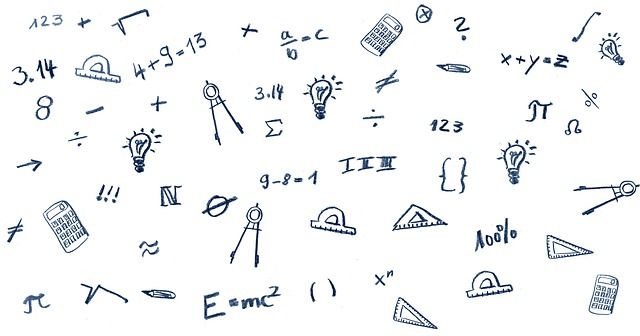A clinical teaching method involves interpersonal communication among a teacher, a learner, and a learning group. This technique helps in identifying issues and provides knowledge for comprehending and resolving the issues by imparting relevant skills. Read on to understand the various aspects of clinical teaching methods.
4 Important Factors of Clinical Teaching:
Factors that need to be used constructively are as follows:
i. The teacher's role, knowledge, attitude, and skills
ii. The learners' roles, experiences, and knowledge
iii. Conditions or external influences which make the teaching-learning process better
iv. Kind of interaction occurring between teacher and learner
Applying clinical teaching methods to education:
In education, clinical teaching methods involve the use of models of decision-making processes that medical practitioners apply. It even draws on the models used for educating medical interns for enhancement of their clinical judgment and related knowledge. Some principal features in the medical models can be useful for our understanding of teaching practice and teacher education. The key aspects can be used for learning by adapting and rethinking the medical model in an educational context.
Professionals draw evidence from numerous sources and relate them to the findings from a contemporary body of research. This is integrated into their knowledge related to the current situation for seeking more evidence, if needed, based on which actions are taken.
Here is how clinical teaching method is applied:
i. Teachers make decisions about teaching by using evidence regarding what students have learned and what they are ready to learn.
ii. Current research evidence is drawn by the teacher, regarding effective practice in making decisions on how to work with one or a group of students.
iii. Information is integrated with regard to a student, his/her characteristics, and prior experiences for making any decision related to the student as well as the teaching method.
iv. The impact of teaching on student learning is regularly evaluated.
v. A teacher uses professional judgment to understand a student and his/her learning requirements for decisions on what, when and how to teach.
vi. Strong connection is established between courses and practical applications through a shared understanding and commitment to reasoning and practice.
vii. There has to be a shared community for practicing.
viii. There has to be a professional conversation between the novice and the mentor, involving questions for which explicit reasoning is provided.
Research areas in the development of clinical skills in clinical teaching methods:
i. Developing expertise in diagnostic reasoning:
It requires experience with a range of analytical and non-analytical strategies. Analytical techniques include generating formal hypotheses for keeping diagnostic possibilities open during the process of reasoning to eliminate chances of premature closure. Similarly, non-analytical methods involve recognizing the patterns of efficiency and avoiding distraction because of trivial features. Formally teaching students analytical and non-analytical reasoning processes results in better diagnostic accuracy.
ii. Representing problem:
It helps in enhancing pattern recognition through triggering memory. This helps in retrieving related knowledge. In cases when the performance is context-dependent, further research might be needed for the semantic application of the clinical technique.
iii. Generating hypothesis:
Strategies like a contrastive approach are used for this. It needs to compare similarities and differences in competing diagnoses at the same time. With a contrastive approach, students can use the ratios for key features of common symptoms.
iv. Physical examination based on evidence:
This hasn't been universally translated to educational practice because of reluctance to avoid unreliable elements of an examination from clinical teaching and learning. Practicing and learning outdated maneuvers leave students with less time for useful clinical practice skills.
v. Psychomotor skills:
These are needed to perform individual maneuvers. These facilitate deliberate practice of maneuvering and identification of abnormal signs.
vi. Communication skills:
It is crucial for accurate and efficient data collection, developing a rapport with patients, and ensuring teamwork with other health professionals. Since communication skills are delivered as an isolated subject, there may be situations when students are presented with advanced skills much before applying the skills in clinical practice. This is its drawback in the medical field.
Principles enhancing the teacher-learner relationship in clinical teaching methods:
i. Practical application of a concept:
Adults often want to apply something as soon as they learn it. This principle is less broken in clinical teaching compared to other areas of medical education. Clinical teachers should aim at justifying something which can’t be shown to have a direct or indirect application in a certain clinical situation.
ii. Interest in solving issues rather than just learning facts:
Clinical teachers emphasize the use of theories rather than just learning them.
iii. Active participation in the learning process by setting the learning objectives:
A teacher possesses the relevant knowledge and experience, so they need to negotiate with the learners regarding objectives, needs, resources, and overall educational goals. This is crucial for resulting in better outcomes through higher motivation levels.
iv. Feedback on their progress:
Formative evaluation is needed to help students know how they are performing. Clinical teachers provide relevant comments, especially negative ones, to bring a change in a student's professional behavior. This helps in better decision-making and learning a skill. Such feedback fills the gap between teacher and learner and produces better learning outcomes.
Conclusion
In medical school education, learning through a clinical setting forms the base and can be optimized to ensure that students acquire clinical expertise. Attention, effort, concentration, and repeating the skills are the characteristics of deliberate practice which help maintain professional expertise in clinical teaching methods. Research in this field has resulted in a better understanding of development of core clinical skills for medical students, mainly in diagnostic reasoning, physical examination, and communication.
Teachmint is keen on changing the future of education with its advanced LMS and ERP tools. With more than 20+ modules for educational institutions like admission management, attendance management system, performance management, and more; it is changing the teaching-learning experience.






